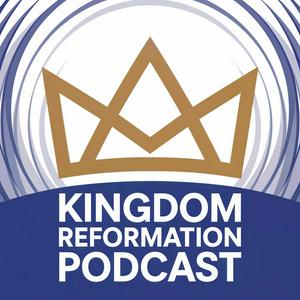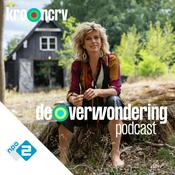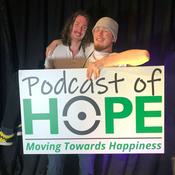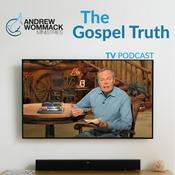Beschikbare afleveringen
5 van 102
- The 5% + The 95% = Kingdom ReformationIn this episode, David Vaka of Breakthrough Nation brings a prophetic, practical word that shakes the church out of old mindsets and awakens us into true Kingdom assignment.This isn’t about chasing a pulpit—it’s about stepping boldly into the place God has already positioned you. David reveals the 5%/95% Kingdom blueprint, showing why only a few are called to full-time church ministry while the vast majorityare commissioned to carry Christ into the marketplace, where the real mission field is waiting.He unpacks how the fivefold equips believers to be reformers in every sphere: business, law, politics, education, arts, media, family—every mountain. You’ll feel the call to stop living for Sunday and start burning with purpose for Monday. You’ll hear the invitation to ascend your mountain, stay connected to covering, and let your life—not just your words—be the message that transforms culture.This episode doesn’t just inspire.It activates.It clarifies your assignment.It calls out the reformer in you.Purchase the book, The Kingdom: God’s Endgame by David Vaka - https://a.co/d/j61JPZ0 This is a public episode. If you'd like to discuss this with other subscribers or get access to bonus episodes, visit www.awakenations.org/subscribe--------46:16
- The 5% + The 95% = Kingdom ReformationThe 95% Problem: Why Your Pulpit Might Be in the MarketplaceThis post is based on a powerful sermon by my friend David Vaka, who spoke recently at the Awake Nations Hub on the Sunshine Coast in Australia. You can listen to the full message in the audio podcast above.Here’s a truth that’s going to challenge some assumptions: everyone reading this is called to full-time Kingdom service. 100%. No exceptions.But here’s where it gets interesting. Only about 5% are called to minister from the pulpit within the four walls of the church. The other 95%? Your pulpit is in the marketplace.And if you’ve been church-hopping looking for a platform to preach, I need you to hear this: what if your sphere, your message, your assignment is actually out there in the Monday-to-Friday world where you spend most of your time?The Ascension-Descension PatternPaul writes something profound in Ephesians 4. He starts with this picture of Jesus ascending and descending, and he tells us the purpose: to fill all places and all spaces. Not just the sanctuary. Not just Sunday morning. All places. All spaces.Then immediately, Paul moves into the fivefold ministry—apostles, prophets, evangelists, pastors, teachers. But notice the purpose: “to equip his people, the saints, for the work of service.”The intent of the fivefold isn’t to create big churches full of people trained to serve within church programs. The intent is to equip the saints so that through us, Christ fills all spaces and all places universally.We’ve built churches that pull people from the marketplace to serve the machinery of church programs. But God’s design is the opposite: equip people in the ecclesia so they can carry Kingdom authority into every sphere where they’re planted.The Shift from Pastoral-Centric to FivefoldThe days of the pastor being the kingpin of the church are over. God is moving us from a pastoral-centric model into a fivefold ministry-oriented model. It’s been happening for a while, but people are slowly waking up.Here’s what synergistic fivefold ministry looks like in practice:The apostle brings governmental order and alignment with Heaven’s patterns. They see the big picture and call the church into its destiny as God’s sent ones.The prophet connects us to God’s voice and heart, keeping us tuned to what the Father is saying right now, not just what He said yesterday.The evangelist fires us up with passion for the lost and trains us to naturally introduce people to the King through our lives.The pastor provides the care, nurture, and safe environment where people can grow and be healed without being coddled into perpetual spiritual infancy.The teacher grounds us in truth, making sure we’re not just excited but also accurate in our understanding of Kingdom realities.When these five work together, they don’t just build a crowd. They build a mobilized, equipped, deployed army that advances the Kingdom in every sector of society.Your Mission Field Is Already AssignedStop looking for a crowd. You already have one. They’re sitting in cubicles around you. They’re in the break room. They’re your clients, your students, your patients, your colleagues.Where you work from Monday to Friday—that’s your mission field. Where you spend 40, 50, 60 hours a week—God has given you people. Wake up and see the harvest all around you every day.Your crowd is the people at your workplace.Your podium is your Kingdom assignment—the specific purpose God placed you there to fulfill.Your message is not your speech. It’s your deeds. It’s your life, your character, your integrity speaking louder than what comes out of your mouth.The Daniel StandardHere’s the standard: be 10 times better than your peers. Daniel and his friends set this bar, and it’s still the standard for marketplace ministers.Be the best student. The best employee. The best leader. When people see you operate with excellence, integrity, and Kingdom character, they’ll start asking questions: “Why are you different?”And that’s when you get to say, “I come from an ecclesia church that has taught us to be like this.”Gifts and talents will take you to the mountaintop, but integrity and character will keep you there.Chase Assignment, Not SuccessCan I encourage you in this? Don’t chase money. Don’t chase success. Chase your Kingdom assignment.When you focus on your Kingdom assignment, money and prosperity will follow. But if you chase money and everything else, you’ll deviate from the main thing.Let the main thing be the main thing. Let your Kingdom assignment be the number one thing. That’s your podium.The Ecclesia ModelWe’re not building a church where people come and sit. We’re building an ecclesia where people come, get equipped, get sent out, and bring more people back. Then those people get equipped, get sent out, and bring more people. And the cycle continues.This is how you build something sustainable. This is how you see genuine Kingdom advancement. Not through better programs or bigger buildings, but through quality disciples who become light and salt in dark places.The church is not the Kingdom, but the church is the vehicle for Kingdom explosion, advancement, and expression.When we get this right—when the ecclesia functions as God designed it—people won’t come because we ran an evangelistic campaign. They’ll come because they met someone at work who made them hungry for what they have. They’ll come because the light they saw in the marketplace led them to the Source.Quality bringeth quantity.A Word for the Sunshine CoastI’m watching something shift in this region. There’s been prophetic word after prophetic word about what God wants to do on the Sunshine Coast. But prophecy without proper structure and alignment is just noise.God is bringing order. Not control. Not religious hierarchy. But divine order where the fivefold ministry equips saints who fill the marketplace with Kingdom presence.This isn’t about building another big church that hoards people in programs. It’s about building an ecclesia that deploys kingdom ambassadors who transform every sphere they touch.The time has come for the Sunshine Coast to see the ecclesia church—not just hear about it, but see it manifest in power and demonstration.Where Do You Go From Here?If you’re in the 5%, lean into your calling to equip. Stop trying to do everything yourself. Mobilize the army.If you’re in the 95%, stop fighting for a pulpit you’re not called to. Your pulpit is waiting for you Monday morning. Go there with Kingdom authority. Be light. Be salt. Be 10 times better.And everyone—100% of you—understand this: you are called. You are equipped. You are sent.Now go fill your space with His presence.Glenn Bleakney is an apostolic leader, author, and founder of Awake Nations Global Network. He teaches on Kingdom reformation, fivefold ministry, and marketplace transformation through awakenations.org and KingdomReformers.org. This is a public episode. If you'd like to discuss this with other subscribers or get access to bonus episodes, visit www.awakenations.org/subscribe--------46:16
- Deep Dive into the Kingdom MandateFor too long, the Church has waited for signs… while Heaven has waited for the Church.This podcast tears back the veil on God’s true storyline: the restoration of humanity to rule, reign, and reproduce His image in the earth. From Genesis to Jesus to our present moment, we explore the unchanging Plan A—Kingdom dominion through God’s redeemed sons and daughters.Here, the Gospel is bigger than an escape plan.It’s sōtēria—salvation that invades every dimension: spiritual, physical, societal.We’re not measuring success by bigger buildings or better programs, but by the fullness of God formed in a people who are sent—apostolically—to transform territories.This is a call to step into your original assignment:Invade. Occupy. Transform.Not someday. Not when the signs line up.Now.If you’re hungry for a mission bigger than survival… if you sense the Church is meant for more… if you believe Christ is waiting for a Kingdom-filled earth before He returns—this podcast is your rallying cry.Welcome to the Apostolic Commission.Awake Nations with Glenn Bleakney is a reader-supported publication. To receive new posts and support my work, consider becoming a free or paid subscriber. This is a public episode. If you'd like to discuss this with other subscribers or get access to bonus episodes, visit www.awakenations.org/subscribe--------14:21
- Reawakened to Good News: Unlocking the Seven Keys of the KingdomIn this power-packed episode of Kingdom Reformation Podcast, we ascend the mountain of revelation and dive deep into Dr. Jim Bradshaw’s transformative book, Reawaken to Good News: Rediscovering the Keys of the Kingdom.This isn’t just another theological conversation — it’s a prophetic call to the global Church to rise out of a subnormal state and step boldly into her identity as the ecclesia, the governing body of Christ on the earth.From dismantling the truncated gospel to embracing Christ’s present enthronement…From rediscovering the true apostolic mandate to understanding the radical four-part initiation of the early Church…From covenant structure to global conquest in the Spirit…We walk through all seven keys of the Kingdom that unlock heaven’s blueprint for revival, reformation, and societal transformation.If you’re hungry, if you’re sensing there’s more, if you know deep down the Church is meant to walk in far greater authority — this episode will ignite you. The keys are in your hand. The King is reigning now. The mandate is active. Let’s climb.Call to ActionIf this episode ignited something in your spirit… don’t just let the fire burn—feed it.Take the next step on this Kingdom ascent.👉 Get your copy of Reawaken to Good News by Dr. Jim Bradshaw on Amazon:https://www.amazon.com/dp/B00KBFN83K?ref_=cm_sw_r_ffobk_cp_ud_dp_XXRMRFD2DFVQMRPXNRX6This isn’t just another book.It’s a strategic manual for believers who refuse to live in the church’s subnormal state… a blueprint for sons and daughters ready to walk in revelation, authority, and Kingdom governance.Awake Nations with Glenn Bleakney is a reader-supported publication. To receive new posts and support my work, consider becoming a free or paid subscriber. This is a public episode. If you'd like to discuss this with other subscribers or get access to bonus episodes, visit www.awakenations.org/subscribe--------37:34
- The Rabbinical Discipleship PathwayIn this episode of the Kingdom Reformation Podcast, Glenn Bleakney sits down with missional strategist, author, and long-time disciple-maker Mike Chong Perkinson — a leader with more than four decades of hands-on experience in forming disciples who live and lead like Jesus.Together, Glenn and Mike explore the rabbinical pathway of discipleship — the relational, identity-shaping process Jesus used to raise up men and women who transformed the world. Mike unpacks how returning to Jesus’ model restores authentic formation, mobilizes everyday believers, and sparks genuine Kingdom multiplication. This is practical, biblical, and deeply aligned with the heart of Jesus for His Church.If you’re longing for a fresh, grounded understanding of disciple-making — one that goes beyond programs and returns to the way of Jesus — this conversation will encourage and equip you.Get the BookTo go deeper, pick up Mike’s book Organic Reformation, a timely guide for rethinking discipleship, leadership, and movement building in our generation.Buy Organic Reformation on Amazon (US):https://www.amazon.com/dp/B006P5KO2S?ref_=cm_sw_r_ffobk_cp_ud_dp_ZZJ6YRZDKZQ2MQKRJYCDJoin the MovementGrow with a global family committed to revival, reformation, and Kingdom impact.Become a member at: https://AwakeNations.org This is a public episode. If you'd like to discuss this with other subscribers or get access to bonus episodes, visit www.awakenations.org/subscribe--------1:03:24
Meer Religie en spiritualiteit podcasts
Trending Religie en spiritualiteit -podcasts
Over Kingdom Reformation
Welcome to Kingdom Reformation with Glenn Bleakney, your go-to podcast for in-depth discussions on all things related to the Kingdom of God, revival, reformation, discipleship, and leadership. Dive deep into the wineskins and ways of New Testament ministry as we explore the power and purpose of the fivefold ministry in today’s world. Join Glenn and special guests as they uncover prophetic insights and practical teachings that will empower you to walk in Kingdom authority and bring transformation to your community. Stay connected by visiting KingdomReformation.org and KingdomCommunity.tv for more resources! www.awakenations.org
Podcast websiteLuister naar Kingdom Reformation, De Ongelooflijke Podcast en vele andere podcasts van over de hele wereld met de radio.net-app

Ontvang de gratis radio.net app
- Zenders en podcasts om te bookmarken
- Streamen via Wi-Fi of Bluetooth
- Ondersteunt Carplay & Android Auto
- Veel andere app-functies
Ontvang de gratis radio.net app
- Zenders en podcasts om te bookmarken
- Streamen via Wi-Fi of Bluetooth
- Ondersteunt Carplay & Android Auto
- Veel andere app-functies


Kingdom Reformation
Scan de code,
download de app,
luisteren.
download de app,
luisteren.




































